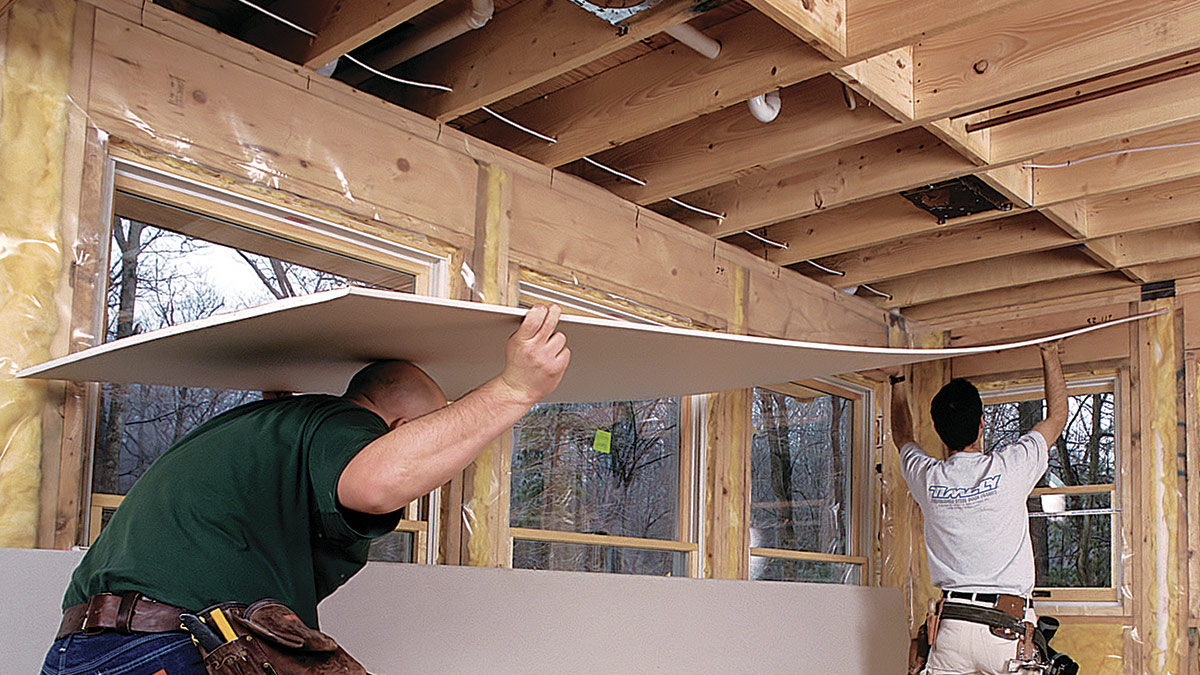Expert Drywall Installation and Repair in the Hamilton Region
Wiki Article
Cost Effective Drywall Repair Work Solutions: State Goodbye to Cracks and Holes in Your Wall Surfaces
Do not stress, budget friendly drywall repair service services are here to save the day. From evaluating the damages to applying finishing touches, we will guide you via each step of the fixing process.
Assessing the Damage
When encountered with the task of examining drywall damage, it is crucial to carry out a detailed and organized evaluation in order to accurately figure out the level and nature of the repair services required. This assessment procedure is important as it lays the foundation for developing a effective and reliable repair plan.To start with, one have to meticulously check the damaged area to identify any noticeable signs of splits, holes, or water damages. It is essential to assess the size, shape, and depth of the damages, in addition to its area on the drywall surface area (drywall Hamilton). This first examination helps in recognizing the extent of the issue and help in figuring out the ideal repair service strategies and products needed
Moreover, it is vital to look for any kind of underlying concerns that may have triggered the damages, such as plumbing leakages or structural issues. These underlying issues have to be resolved and dealt with to avoid future damages and ensure the long life of the repair work.
In addition, it is suggested to tap the broken location gently to identify any kind of hollow or loose places. This touching technique aids in identifying possible locations that may need further focus throughout the repair service process.
Collecting the Necessary Devices
To properly complete the drywall repair work procedure, it is vital to collect the needed tools. Having the right tools handy will enable you to successfully and successfully fixing cracks and holes in your walls. Right here are some necessary devices you will need:- Putty blade: This tool is used for removing old paint and smoothing the surface area of the fixed location. It can be found in various dimensions, so select one that suits the size of the repair.

- Sandpaper: After applying the patching substance, sandpaper is utilized to smooth the surface area and mix it effortlessly with the remainder of the wall. Choose a medium-grit sandpaper for ideal results.
Joint compound: Also understood as spackle or mud, joint substance is made use of to fill up cracks and holes. Choose for pre-mixed compound for ease.

- Covering tape: This self-adhesive mesh tape is used to enhance the joint substance and stop fractures from reappearing.
- Paintbrush and paint: Once the fixing is complete, a paintbrush and paint will be required to match the color and appearance of the existing wall.
Patching Small Openings and Cracks
Are you confronted with the task of covering little holes and fractures in your drywall? Do not fret, with the right tools and techniques, you can quickly fix these flaws and restore the smooth look of your walls.Start by cleaning the area around the hole or crack to remove any loose debris or dirt. Use the putty blade to use a thin layer of spackling compound over the broken location.
As soon use this link as the compound is dry, gently sand the patched location to produce a smooth surface area. Take care not to sand excessive, as this can damage the bordering drywall. After fining sand, clean away any dirt with a clean towel.
To end up, use a layer of guide over the patched location to guarantee a smooth mix with the surrounding wall surface. Once the guide is completely dry, you can repaint the fixed area to match the rest of your wall surface.
Fixing Larger Damaged Locations
For repairing bigger damaged locations on your drywall, you will need to follow a somewhat various process than when patching tiny holes and cracks. If the damages is minor, you can proceed with the fixing procedure. Bear in mind, repairing bigger damaged areas might call for even more time and effort, however it is possible with the right devices and methods.Finishing and Painting Strategies
After effectively fixing larger damaged areas on your drywall, the following step is to understand the ending up and repainting methods to achieve a professional-looking and seamless outcome. Finishing refers to the process of preparing the fixed location for painting. It includes using joint compound to cover the repaired area and mixing it with the surrounding wall surface.Choose for a high-grade acrylic latex paint that matches the existing color of your walls. Before repainting the fixed location, it is advised to prime his comment is here it with a high quality guide. Make use of a brush or roller to use the paint, starting from the sides and functioning your means towards the.
Final Thought
Analyzing the damage, gathering the essential tools, and making use of the suitable techniques, such as patching and fixing, will Home Page aid recover your wall surfaces to their original problem. With these affordable drywall fixing remedies, you can say farewell to undesirable cracks and openings in your wall surfaces.Putty blade: This device is made use of for scraping off old paint and smoothing the surface area of the fixed location.For fixing larger harmed areas on your drywall, you will certainly need to follow a slightly various procedure than when covering small holes and fractures. Remember, repairing larger damaged areas might require even more time and effort, but it is attainable with the right tools and techniques.
After effectively repairing larger harmed areas on your drywall, the next action is to master the completing and repainting strategies to attain a professional-looking and smooth outcome (drywall repair). It includes applying joint substance to cover the fixed location and mixing it with the surrounding wall
Report this wiki page